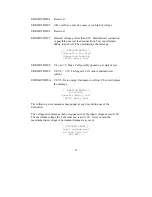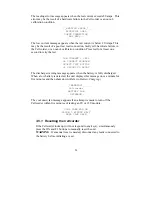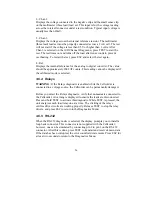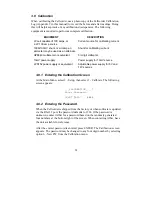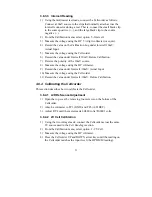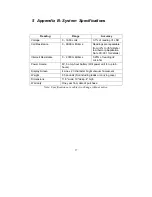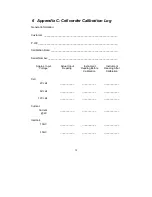
34
6) Press the UP and DOWN arrow keys until the reading on the
Cellcorder matches the current value (mV reading across the shunt)
read across the shunt.
NOTE: After the TEST key is pressed, this test allows current to
flow for only 10 seconds before de-energizing the load relay. This
prevents overheating of the load resistors and leaving the Cellcorder
in a loading condition. To resume the test, press ESC and select
option 4 (current) again.
7) Record the current reading from the Cellcorder onto the Calibration
Log under Current at 2V: After Calibration.
3.8.4.6 Intercell
Adjustment
1) Connect a 10mV source to the small sense clip and the large black
current clip.
2) From the Calibration menu, select option 5 - Intercell.
3) Observe the Cellcorder reading. Reverse the polarity of the 10mV
source and verify the Cellcorder reading does not change by more
than 30
µ
V. If the value is within this 30
µ
V range, go to step 5.
4) If the reading changed more than 30
µ
V, then the offset adjustment
on the input preamp must be adjusted. Adjust RV3 until the value is
within 30
µ
V when changing polarity on the input.
5) Press the UP and DOWN arrow keys until the Cellcorder reading
matches the input value. If the input is not a fixed 10mV standard
source, then use the HP DVM to verify the input value.
6) Record the Cellcorder readings in the Calibration Log under the
Intercell: 10mV and -10mV After Calibration locations.
3.8.4.7 Battery Charger Adjustment
As the battery charges, the voltage drop across current sensing register
R24 decreases. When the battery approaches full charge, this voltage is
about 30mV (with the AC adaptor plugged in).
RV1 must be readjusted periodically during the adjustment process to
achieve a nominal float voltage of 9.40 volts at TP3 (GND) and TP2
(+8V BAT). This process could take from one to ten hours, depending on
the initial state of charge of the battery.




